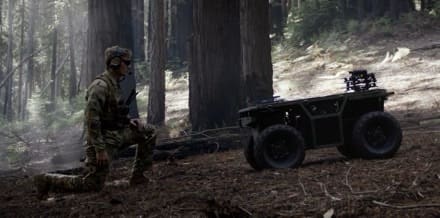
LAS VEGAS (AFNS) —
The Air Force wrapped up the second Decision Advantage Sprint for Human-Machine Teaming, known as DASH 2, a fast-paced experiment exploring how artificial intelligence can help operators make faster, smarter decisions in complex battlespaces.

DASH 2 took place at the Shadow Operations Center-Nellis’ unclassified location in downtown Las Vegas and was led by the Advanced Battle Management System Cross-Functional Team.The effort was conducted in partnership with the Air Force Research Lab’s 711th Human Performance Wing, the Integrated Capabilities Command and the 805th Combat Training Squadron, also known as the ShOC-N.
“DASH 2 proved human-machine teaming is no longer theoretical,” said Col. Jonathan Zall, ABMS Capability Integration chief. “By fusing operator judgment with AI speed, the Air Force is shaping the future of decision advantage in joint and coalition operations.”
AI Speeds Decision Advantage
Initial results showed that machines produced recommendations in less than ten seconds and generated 30 times more options than human-only teams. Two vendors each produced more than 6,000 solutions for roughly 20 problems in just one hour. The software’s accuracy was on par with human performance, despite only two weeks of development. In one case, a single algorithm adjustment would have raised recommendation validity from 70 percent to more than 90 percent.
“This level of output gives commanders options to execute multiple kill chains simultaneously and we’re excited about our next experiment to generate the courses of action with the machines to help illuminate risk, opportunity gain/loss, material gain/loss, among others,” said Col. John Ohlund, ABMS CFT director.
Inside DASH 2
The DASH series is part of the Air Force’s campaign to modernize command and control and gain decision advantage through human-machine teaming. Each sprint refines a specific decision function and informs future Department of the Air Force C2 development. The series also supports the Pentagon’s Combined Joint All-Domain Command and Control initiative.
“Human-machine teaming is critical to accelerating the speed and quality of decisions across the joint force, and DASH 2 provides the insights we need to make that a reality,” Zall said.
Human-Machine Teaming in Action
Seven teams participated in DASH 2, including six industry teams and one ShOC-N innovation team. Their challenge was to design AI-enabled microservices capable of assisting operators with the “match effectors” function, which determines the best available weapon system to destroy an identified target.

Developers observed battle management crews operating without machine assistance, then iteratively designed and tested tools to augment human decision-making. Final demonstrations compared human-only performance against human-machine performance, measuring speed, quantity and quality.
“Being part of DASH 2 showed us how human-machine teaming can enhance performance without losing operator judgment,” said Capt. Steven Mohan III, 726th Air Control Squadron chief of standards and evaluations.
Industry and Air Force Collaboration
Evaluation focused on whether these tools helped operators make more effective decisions, not just process more data.
DASH 2 also reaffirmed the value of co-development with both industry and Air Force developers. Companies retained intellectual property rights while the Air Force gained insight into integration and functional requirements for future C2 software.
“At the ShOC-N, our mission is to put new capabilities into operators’ hands and test them under conditions that resemble real-world battle management,” said Lt. Col. Shawn Finney, 805th CTS/ShOC-N commander. “DASH 2 demonstrated how the battle lab enables rigorous testing while maintaining operational fidelity, bridging the gap between concept and capability.”
Early Results and Lessons Learned
The 711th HPW collected data on operator performance, workload and teaming dynamics. Findings confirmed that AI can accelerate decision-making while keeping humans at the center of the process.
“Collaboration with AFRL, the ABMS program office and industry allowed us to rapidly experiment, refine requirements and accelerate the path from concept to capability delivery,” Ohlund said.
Shaping the Future of C2
The DASH series is a key step in modernizing Air Force command and control. By combining human judgment with AI, the service is preparing operators to make faster, more informed decisions in future contested environments.
“DASH 2 proved human-machine teaming is no longer theoretical,” Zall said. “By fusing operator judgment with AI speed, the Air Force is shaping the future of decision advantage in joint and coalition operations.”
By Deb Henley, 505th Command and Control Wing Public Affairs
805th Combat Training Squadron, also known as the Shadow Operations Center-Nellis
























































































































